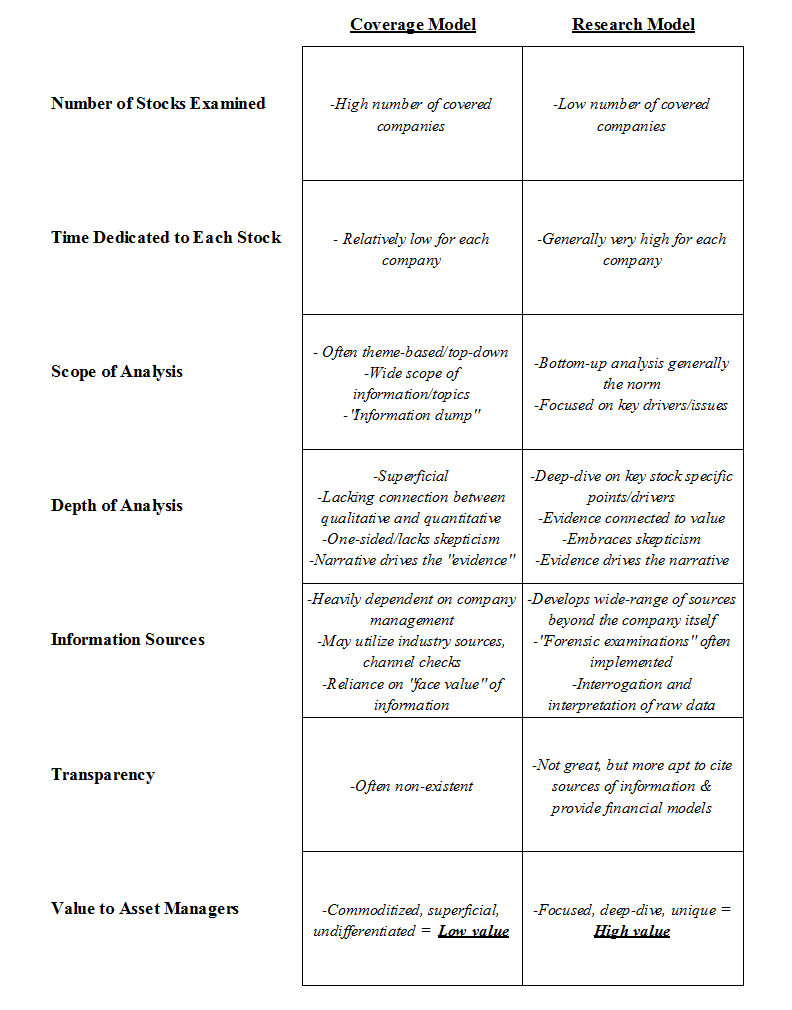With the closing of multiple investment banks’ equity research departments and headcount reductions throughout the industry, there remains little doubt that the world of equity research is changing rapidly.|
Whether these changes simply represent an industry-wide restructuring or whether we are witnessing a major global disruption remains to be seen. However, what is becoming clear is that there is an ever-increasing stratification in the quality of equity research.
As this stratification continues, we see two primary production models emerging. The first, what we call the “Coverage Model”, is akin to the traditional sell-side approach hallmarked by the coverage of a large number of companies in a relatively superficial manner. The second model, which we call the “Research Model”, takes the form of highly specialized and often independent firms, who focus in on a smaller number of companies, but with significantly deeper levels of analysis. Ultimately, these two models can be distinguished by their thematic base and scope, depth of analysis, information sources, and transparency. While both models certainly have their place in the market, we believe the qualities inherent to the Research Model create significantly more value for asset managers.

Thematic Base and Scope of Analysis
As mentioned, one of the hallmarks of the Coverage Model is the examination a large number of companies. This approach has a number of natural consequences, the most obvious of which is less time available to focus on each individual company. This often leads the analysts operating within this model to create macro or sector-based themes that dominate their analysis with only a small percentage of a report being dedicated to the individual company in question. Along with that approach also comes the tendency to elaborate on a wide range of information to form a comprehensive narrative without drilling down on what is truly important. Any evidence that is presented is usually put in place to support the analyst’s story (as opposed to the evidence driving the story in the first place). Ultimately, this narrative creates the illusion of a thorough, company-specific analysis where none really exists. To maintain the illusion, initiation notes essentially become “information dumps”, while follow-up notes are forced to comment on everything, whether the news or event is important or not. This theme-based, wide-scope + maintenance report approach usually results in little differentiation between the purveyors of such work and rarely results in alpha generation for clients.







